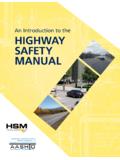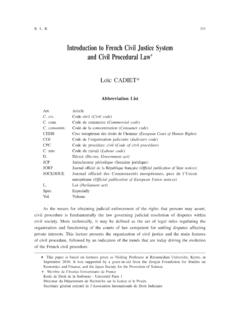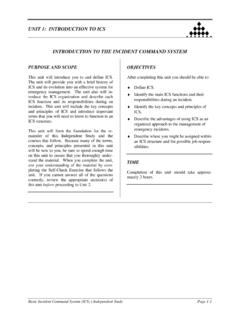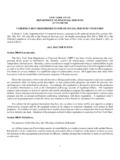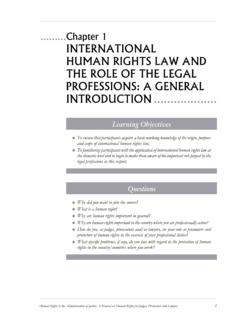Transcription of An Introduction to the Structure and Sources of American ...
1 An Introduction to the Structure and Sources of American Law Mark Davies This essay is intended as a one-page Introduction for non-lawyers to the Structure and Sources of American law. In the United States, laws are enacted, interpreted, and enforced at the federal, state, and local level. All three levels contain a constitution (called a charter at the local level, although many municipalities do not have charters) adopted by the people, laws enacted by a legislative body, and rules promulgated by individual agencies. As a general rule, a hierarchy exists, such that a constitution (or charter), law, or rule may not contradict a higher constitution, law, or rule. The hierarchy is: Constitution Laws (statutes) enacted by Congress Rules promulgated by federal agencies State constitution Laws enacted by the state legislature Rules promulgated by state agencies City/county charters (the constitution for the city or county) Local laws and ordinances Rules promulgated by local agencies.
2 Thus, for example, a New York City local law may not contradict any provision of the or State constitution, laws, or rules. (New York State s Home Rule Law does, however, allow a local law to contradict certain New York State laws.) When laws are enacted and rules are promulgated, they are often accompanied by memoranda by the enacting/promulgating authorities ( , the Governor or the NYC Council) explaining their understanding of the nature and purpose of the laws and rules. These memoranda are part of the legislative history of the laws and rules. Most laws enacted by a legislative body, and most rules promulgated by an administrative agency, are collected by subject matter into some compilation, that is, they are codified. Thus, laws passed by the Congress and signed by the President in a particular session are given a Public Law number ( , PL 111-8) and published chronologically in the Statutes at Large ( , 123 Stat 524); their provisions are collected, by subject matter, in the United States Code ( , 7 138).
3 Laws passed by the NYS Legislature are set forth chronologically in the Session Laws ( , 2009 Laws Chapter 1) and codified in the Consolidated Laws of the State of New York ( , General Municipal Law 804). NYC local laws are codified in the New York City Administrative Code ( , Ad. Code 12-110). Federal administrative rules are published chronologically in the Federal Register and codified in the Code of Federal Regulations. Administrative rules of NYS agencies are published in the NYS Register and codified in the New York Code Rules and Regulations (NYCRR). Administrative rules of NYC agencies are published in the City Record and then codified in the Rules of the City of New York (RCNY). These various constitutions, charters, statues, laws, and rules are interpreted in decisions by courts (federal and state) and by administrative agencies (federal, state, and local).
4 Those decisions may or may not be published. [Legal: Introduction to American Law]










